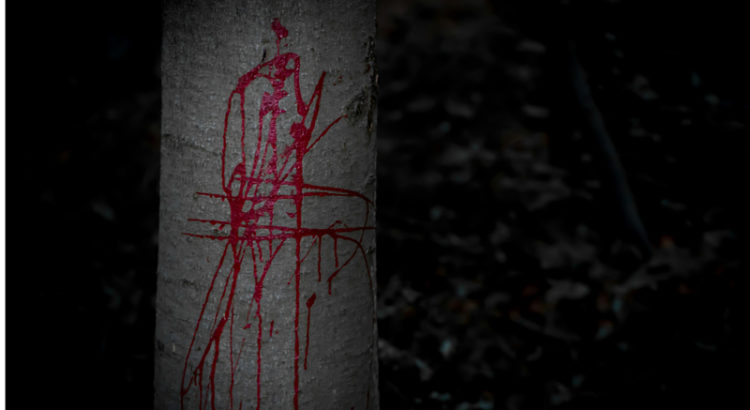When Thomas Forbs arrived in the valley that was to become The Poplars, in the late 16th century, the only area that wasn’t thick forest was the clearing surrounding the Well. It took Forbs and his people many years to clear the area of trees and start planting their own crops, thus evolving from hunter-gathers to farmers over the course of about two decades. The original plan was to clear the flatland, the fertile, deep soil between the hills but, from discussions with the Monacan, Forbs learned there were several natural boundary points that might make better borders for his fiefdom. The first lay directly north, the sacred outcrop Forbs’ people called the Mound. The second was the Well itself. The third was an already-ancient Spanish Oak, one that stood in the center of a sun-dappled grove, taller and more majestic than its fellows. Only ferns grew in its shade, or for fifty feet or so outside it. The other trees kept their distance. The Monacans told Forbs he should never attempt to cut this tree down, and he respected their wishes. It came to mark the eastern boundary of the cultivated Poplars, a “witness tree” before the term became commonly used.
The first man to swing from its branches was, by all accounts, a suicide. Dressed in hunter’s garb, he walked out of the forest one day in 1660, looped his rope round a sturdy lower bough, and hanged himself. The Indians did not recognize him as one of theirs and no one on the plantation admitted to knowing who he was. The vicious crows who patrolled the area would normally peck any dead cattle to pieces, but they did not touch the man. Instead, they perched on the surrounding branches, regarding him with their cold black eyes, refusing to be scared away by humans at the foot of the tree. The stranger hung there for nine days, gently putrefying in the warm summer breezes, then the Forbs men finally cut him down and bore him to an unmarked grave on The Mound.
At some point after that, for reasons lost to us over the ages, the field where the oak stood became known as Ruffney’s or Raffney’s or Rafney’s Acre. Perhaps someone at the Poplars discovered the mysterious man’s name, and commemorated him the only way they knew how?
Many of the plantation’s inhabitants saw the hanging man and the seed grew in their mind that this was an ideal purpose for the old oak. Its lower branches jutted at the perfect height, inviting the toss of a rope. It stood in an open space, and it was easy enough to bring the condemned on the back of a horse, or bound and hooded in a cart, and maneuver them into position without any heavy lifting. There was an area for a small crowd to gather — hangings at the isolated Poplars were never the mass entertainment affairs that they were in towns and cities, but word would get out and the inhabitants of the surrounding farms and tiny villages would tread silently through the forest pathways to bear witness. Over the years, much witnessing was required.
Thomas Forbs did not believe in capital punishment, and for several years after his death his descendants honored his belief. Then, as incomers and attitudes from the outside world filtered into the Poplars, the inhabitants of the valley began to fit this punishment to several crimes: murder, rape, theft, concealment of a live birth. Executions usually took place on a Sunday. Slaves and freemen alike were expected to attend, and bring their families, so that the full moral benefit of witnessing a man strangle might be gained. Notably, no one was ever hanged for witchcraft in the area.
No one kept count of how many lost souls might be entangled in the dense foliage of Raffney’s Oak, but dozens of men, women and children breathed their last while dangling from its lower branches. Over time, it gained a reputation for being haunted. The final moans of the dying forever echo in the rustle of its leaves. Locals did not think of the tree itself as evil — it was far too ancient for that — but the evil that men do hung around its boughs. One night in 1812 it was struck by lightning, a massive bolt that killed half of the tree instantly, leaving it denuded and twisted. The other half remained green, and turned even more glorious colors in the fall. In the dark years that followed at The Poplars, ruled over by Edgar Forbs (who was born the night of the lightning bolt), the overseers took to hanging men only from the blasted side of the tree, so that witnesses might better see the condemned’s death rattle.
Raffney’s Oak was cut down after the Eudora Kemp incident in 1919, otherwise it would probably still be standing today.






